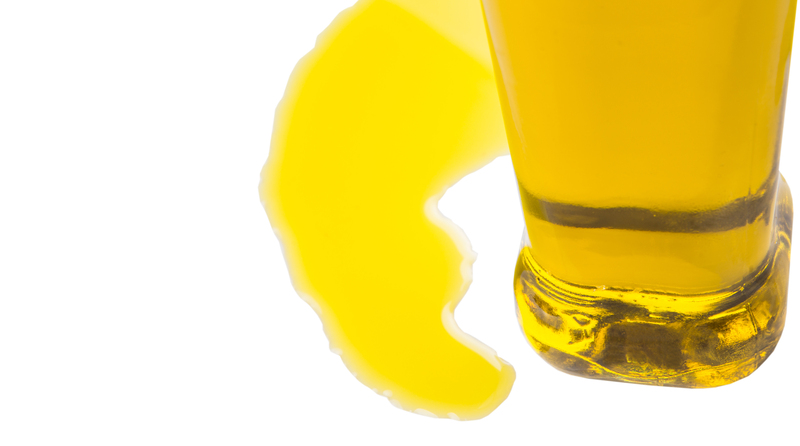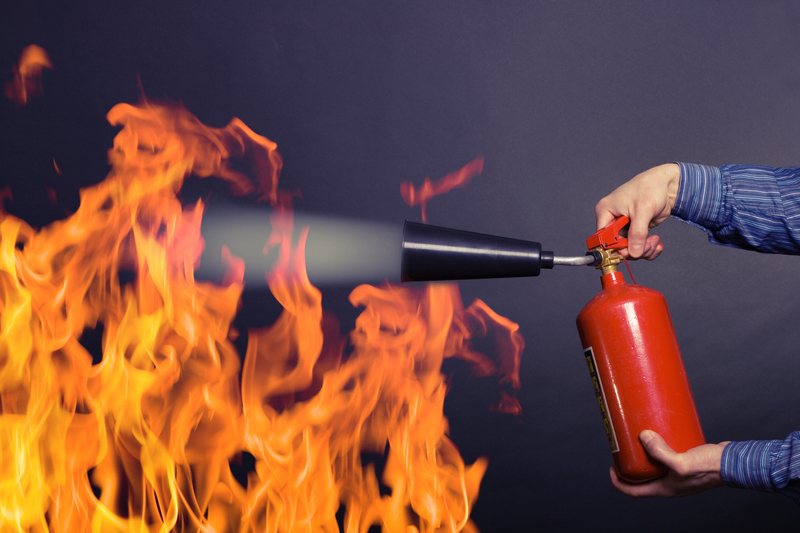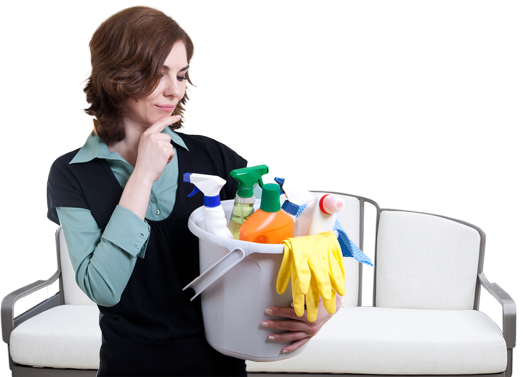The Path to Perfectly Streak-Free Windows Revealed
Posted on 23/08/2025
The Path to Perfectly Streak-Free Windows Revealed
Few things detract more from the beauty of a home or office than streaky, grimy windows. If you've ever attempted a DIY window cleaning and ended up with streaks, smears, or spots, you're not alone. Achieving crystal-clear, streak-free windows can feel like an elusive task, but when you know the right techniques, it's absolutely possible. This comprehensive guide will reveal the path to spotless, streakless windows, including professional tips, science-backed solutions, and common mistakes to avoid.

Why Clean Windows Matter
Clean windows are about more than just aesthetic appeal. Sparkling, streak-free window panes can:
- Enhance natural light, making any space feel brighter and more inviting
- Improve your home's curb appeal and value
- Extend the lifespan of your windows by preventing build-up of dirt and debris
- Boost your mood with a clearer view of the outdoors
The benefits of clean, streakless windows extend beyond surface looks--they directly influence both your happiness and the longevity of your property.
Understanding Why Streaks Happen
Before revealing the secrets to pristine windows, it helps to understand why streaks appear in the first place. Most window streaks result from either:
- Improper cleaning solutions--some leave residues or dry too quickly
- Using dirty or low-quality cleaning tools
- Washing windows in direct sunlight, causing rapid evaporation
- Overusing cleaning solution or water, which leaves behind more to dry and streak
Knowing the common causes of streaky windows is the first step on your journey to spotless, streak-free glass.
The Science Behind Streak-Free Cleaning
At its core, achieving streakless windows requires balancing effective cleaning agents, quality tools, and ideal conditions. Window glass has microscopic pores that can trap dirt, oils, and residues. The wrong solution or technique can leave behind minuscule streaks, as these residues scatter light differently, creating visible lines and marks.
To combat this, you need:
- A solution that dissolves dirt and grease but evaporates cleanly
- Tools that trap and remove both grime and the cleaning liquid itself
- Techniques that work with--rather than against--the environmental conditions
Essential Supplies for Streak-Free Windows
Investing in quality supplies can make the difference between a frustrating chore and stunning success. Here's what you need for truly streakless window cleaning:
The Best Cleaning Solutions
- Commercial Glass Cleaners: Products like Windex and Sprayway are formulated to evaporate cleanly and resist streaking.
- DIY Vinegar Solution: Mix one part white vinegar with one part distilled water. This classic, eco-friendly solution is powerful against grime and leaves windows sparkling.
- Dish Soap Solution: A drop or two of dishwashing liquid in a bucket of warm water is the preferred method of many professionals. Just be sure to rinse thoroughly!
Tip: Avoid using paper towels or strong ammonia-based cleaners, as they can leave residue or damage window tints.
Must-Have Window Cleaning Tools
- Microfiber Cloths: These attract dust and absorb liquids without lint or streaks. Always keep multiple clean cloths on hand.
- Squeegees: A professional-grade squeegee makes all the difference for large window panes and outdoor glass.
- Bucket: Use a clean bucket for your chosen cleaning solution; never use a dirty one.
- Soft Bristle Brush or Sponge: Loosens tough dirt gently, especially on exterior windows.
- Scraper (optional): For removing paint spots or caked-on debris (always use carefully).
- Ladder or Extension Pole: For high or hard-to-reach windows, prioritize safety at all times!
Step-by-Step Guide to Streak-Free Window Perfection
Now, let's walk through the entire window cleaning process, breaking down each step for spotless, streakless results every time.
1. Pick the Right Time
- Avoid direct sunlight. Early morning or late afternoon are ideal. Sunlight makes solutions evaporate before they can be wiped away, causing streaks.
- If possible, choose a cloudy day or clean windows in the shade.
2. Dust and Prep
- Use a dry microfiber cloth, soft brush, or duster to remove loose dirt, dust, and cobwebs from the window frame and glass.
- Don't forget the screens! Remove and rinse them with soapy water, then let them dry completely.
- Wipe down window sills, tracks, and frames to catch any debris before introducing liquids.
3. Apply Your Cleaning Solution
- Saturate your microfiber cloth or sponge in your chosen cleaning solution. (For spray bottles, mist directly onto the glass.)
- Start at the top and work your way down. This ensures no drips land on areas you've already cleaned.
- Use circular motions to loosen any stubborn spots or greasy residues.
4. Squeegee Like a Pro
- Hold the squeegee at a slight angle, starting at the top left corner (for right-handed people; left corner for left-handed).
- Pull the squeegee steadily across the glass, overlapping each previous stroke by an inch or two.
- Wipe the rubber blade with your cloth after each pass to prevent streaks.
- Vertical strokes for tall/narrow windows, horizontal for wide windows.
5. Buff and Detail
- With a fresh, dry microfiber cloth, buff any remaining damp areas or spots.
- Pay special attention to corners and edges--where solution tends to collect.
- Stand back and inspect the window in both natural and artificial light, checking for smudges or lines.
6. Allow to Dry, Then Reinstall Screens
- Give the glass a few minutes to fully air dry, leaving windows open if safe and practical.
- Return clean, dry screens to their frames for an all-around bright, streakless finish.
Expert Tips for Streak-Less Window Cleaning
- Always use distilled water if your tap water is hard or mineral-rich. Minerals can leave behind streaks and water spots.
- Avoid paper towels. They might seem handy, but they can leave lint and cause streaks.
- Change your water and cloths often. Once your microfiber becomes damp or dirty, swap it for a new one.
- Use a Z-shaped motion with your squeegee, not up-and-down or side-to-side alone, to better direct water and avoid streaks.
- Work quickly yet methodically. Don't let the cleaning solution dry on the glass.
Bonus tip: For lasting results, lightly polish the inside of your windows with a dry microfiber cloth every week--no solution required.
Common Mistakes to Avoid for Streakless Glass
- Using too much cleaner, which can leave residue behind
- Not rinsing cleaning tools between windows
- Cleaning windows on hot, sunny days
- Letting soapy water or vinegar solution drip into wood frames--this can cause staining or damage
- Ignoring the condition of your squeegee blade--replace it if cracked or nicked!
Eco-Friendly Window Cleaning for Streak-Free Results
If sustainability is important to you, you can still enjoy streak-free windows while protecting the environment.
- Opt for natural cleaners like vinegar and water, lemon juice, or plant-based soaps.
- Use reusable microfiber cloths instead of disposable wipes or paper towels.
- Try a few drops of essential oil in your cleaning solution for a fresh scent and anti-bacterial boost.
When to Call the Professionals
Some windows are especially challenging--think multi-story homes, awkward angles, or heavily soiled panes. In these cases, professional window cleaning services are well worth the investment. Armed with commercial-grade equipment and expertise, pros deliver flawless, streakless windows fast and safely.
- If you notice calcium build-up, hard water stains, or exterior grime that won't budge--call a pro.
- For windows that require ladders or roof access, professional help ensures safety and peace of mind.

Frequently Asked Questions About Streak-Free Window Cleaning
What is the best solution for streakless windows?
The most popular and effective formulas are a 50/50 solution of white vinegar and distilled water, or the classic soap-and-water mix favored by pros. Both evaporate cleanly and cut through dirt and grease, ensuring streak-free window glass every time.
Why do my windows look streaky after I clean them?
Usually, streaks appear because:
- You're using a low-quality or oversaturated cleaning cloth
- The cleaning solution dried too quickly, often due to sunlight
- Too much cleaning fluid was applied and not removed properly
- Hard water was used, leaving mineral deposits
How often should I clean my windows?
For consistently streak-free windows, interior glass should be cleaned every 2-3 months, and exterior panes about four times per year--though this varies based on weather and surroundings.
Can I use newspaper to clean windows?
Newspaper has long been touted as a window cleaning hack because it's relatively lint-free. However, inks today may leave streaks or reside on glass, and paper is less effective than microfiber for streak-free cleaning. Stick to modern tools for the best results.
Conclusion: Enjoy Your Streak-Free Windows
Achieving perfectly clean windows with no streaks is within your reach. Armed with the right solutions, tools, and expert techniques, you can transform the appearance of your home or workspace in just a few hours. Remember, preparation and attention to detail are the keys to glass perfection.
- Always choose quality microfiber cloths and a good squeegee
- Work on cloudy days or in the shade
- Use tested, residue-free cleaning solutions like vinegar or professional products
- Maintain your windows--regular light dusting prolongs the streak-free shine
Now that the path to perfectly streak-free windows has been revealed, you're ready to enjoy uninterrupted views, brighter rooms, and a sense of accomplishment every time you look outside. Happy cleaning!





